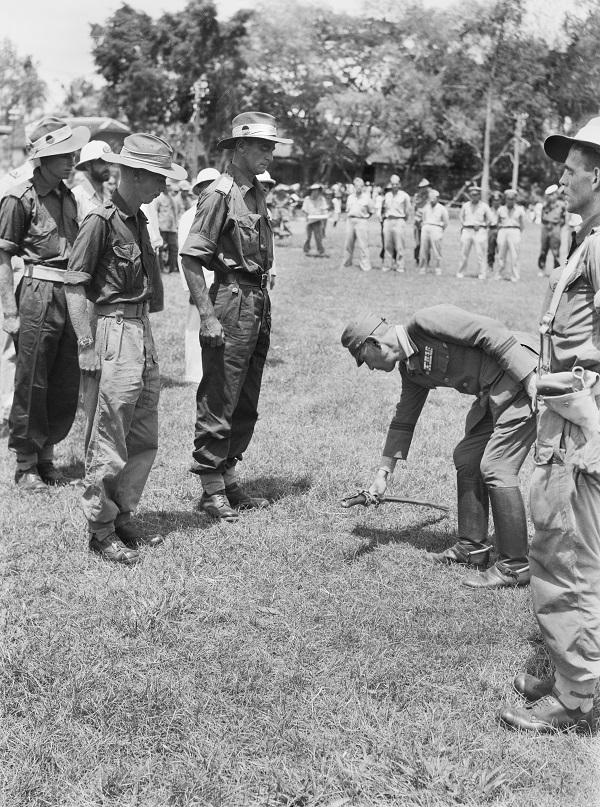
| Historical Information | |||||
| Caption | Japanese Maj. General Michio Uno of the 37th Army lays down his sword at the feet of Australian Army Lt Colonel Ewan Murray Robson at Bandjermasin, Borneo, 17 Sep 1945. ww2dbase | ||||
| WW2-Era Location Name | Bandjermasin, Borneo, Dutch East Indies | ||||
| Date | 17 Sep 1945 | ||||
| Photographer | Unknown | ||||
| Source Information | |||||
| Source | ww2dbaseAustralian War Memorial | ||||
| Identification Code | 118033 | ||||
| Related Content | |||||
| More on... |
| ||||
| Photos on Same Day | 17 Sep 1945 | ||||
| Licensing Information | |||||
| Licensing | This work is believed to be in the public domain. Please contact us regarding any inaccuracies with the above information. Thank you. |
||||
| Metadata | |||||
| Added By | David Stubblebine | ||||
| Photo Size | 600 x 807 pixels | ||||
Você gostou deste artigo ou achou este artigo útil? Se sim, considere nos apoiar no Patreon. Mesmo USD $1 por mês já vai longe! Obrigado. Por favor, ajude-nos a espalhar a palavra: Fique atualizado com WW2DB: |
Visitor Submitted Comments
All visitor submitted comments are opinions of those making the submissions and do not reflect views of WW2DB.
Pesquisar WW2DB

Map
WW2-Era Location Name:Bandjermasin, Borneo, Dutch East Indies
Latitude-Longitude:
-3.3333, 114.5833
Foto Aleatória
Portrait of Deng Xihou as seen in the 3rd (1925) edition of Who's Who in China, published by The China Weekly ReviewEstatísticas Atuais do Site
- » 1,173 biographies
- » 337 events
- » 44,917 timeline entries
- » 1,245 ships
- » 350 aircraft models
- » 207 vehicle models
- » 376 weapon models
- » 123 historical documents
- » 261 facilities
- » 470 book reviews
- » 28,480 photos
- » 365 maps
Citação Famosa da 2ª GM
"Goddam it, you'll never get the Purple Heart hiding in a foxhole! Follow me!"Captain Henry P. Jim Crowe, Guadalcanal, 13 Jan 1943
Apoie-nos
Por favor, considere nos apoiar no Patreon. Mesmo R$1 por mês já faz uma grande diferença. Obrigado!
Ou, por favor, nos apoie adquirindo alguns produtos do WW2DB na TeeSpring. Obrigado!
14 Mar 2021 02:24:15 PM
Lt Col Robson called for MGen Uno to lay his sword on the ground but Uno tried twice to simply hand it to Robson. Robson insisted and Uno finally complied. Robson had two reasons: to create an unmistakable image of surrender and to force the Japanese general to bow before him, as Japanese captors had done so often with Australian prisoners.